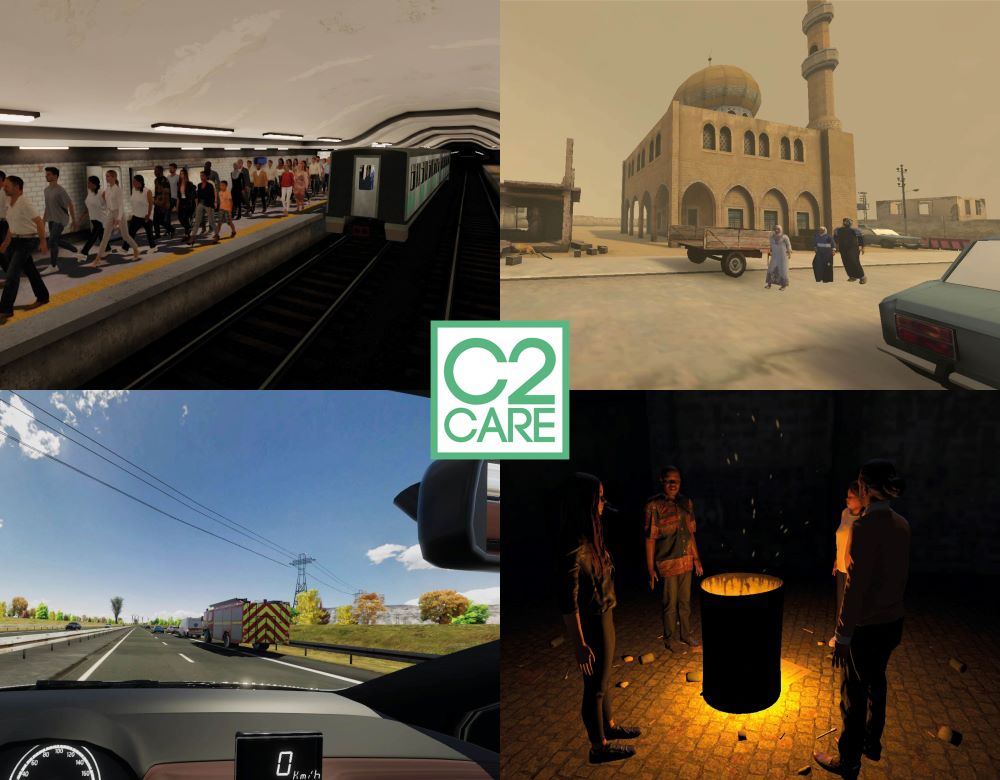VIRTUAL REALITY TO OVERCOME PTSD
Virtual reality allows the traumatic event or place to be recontextualised. Being in an environment that will generate anxiety for the person because of their post-traumatic stress state, will allow you to work on the thoughts, beliefs and anxieties perceived directly in the environment. This work is done in a gradual and safe way, teaching you the methods to overcome this anxiety. Gradually the symptoms will diminish and the situation will no longer provoke particular anxiety.
« Virtual reality is 80% effective, with benefits that are maintained for more than a year after treatment. » Eric Malbos, Doctor Psychiatrist
C2Care, the world leader in therapeutic virtual reality (VR) since 2015, now allows you to expose yourself from your home. A psychologist will accompany you in your treatment using cognitive behavioural therapies (CBT) and virtual reality exposure to overcome your anxiety.

More than 1000 patients already treated, be next!
VIRTUAL REALITY ADAPTS TO YOUR PHOBIA

PUBLICS TRANSPORTS
Public transport such as the metro, bus or train can be a real source of anxiety and can be places that seem impossible to access when suffering from post-traumatic stress disorder.
PUBLICS PLACES
Suffering and anxiety can occur in different public places that may remind one of the traumatic event or by the fear of the other in a more general way.
This is why certain environments such as the train station, the supermarket, the airport or the cinema will allow us to work on the place, but also on the possible distressing presence of other people.


DRIVING
It is not uncommon for post-traumatic stress to arise after a car accident, either experienced or recounted, and to disrupt the ability to be comfortable on the roads.
This is why the motorway and tunnel environments will allow a gradual approach to the road, whether it be due to the density of traffic, the weather or the type of vehicle (truck, motorbike).
VIOLENCE
Post-traumatic Stress Disorder (PTSD) arises after an event that has put you in danger, resulting in physical or psychological injury.
The violence, whether it is done by those around you or by strangers, has significant consequences. It will therefore be possible to work on the Orient and Ville de Nuit environments.


OTHER
Trauma is linked to your own history and specific circumstances. This is why C2Maps will allow you to be in the exact location of your trauma to work on it.
It is also possible to be in a room environment in a basement and hospital.
HOW DOES IT WORK?
1. I get my headset
You will need to equiped yourself with a compatible virtual reality headset. You will then have an unlimited access to our software : C2Phobia, C2Drive, C2Hypno, C2Brain, C2Custom, and C2Motion.
2. I carry out my sessions
If you are followed by a therapist, you will discuss together your anxiety disorder, in order to understand it and to give you the necessary tools to reduce it. You will be exposed to virtual reality in a progressive manner adapted to your needs.
3. I use my headset autonomously
You will be able to repeat as many times as necessary the exposure to the different situations in order to create a habituation and thus reduce the anxiety related to them.
tÉMOIGNAGES
Each person tells in their own words about the support they have received and the major changes that have taken place in their lives.
All these testimonies are proof that yes, one’s life can change, and that we are doing everything we can to guide you on the path to that change.
